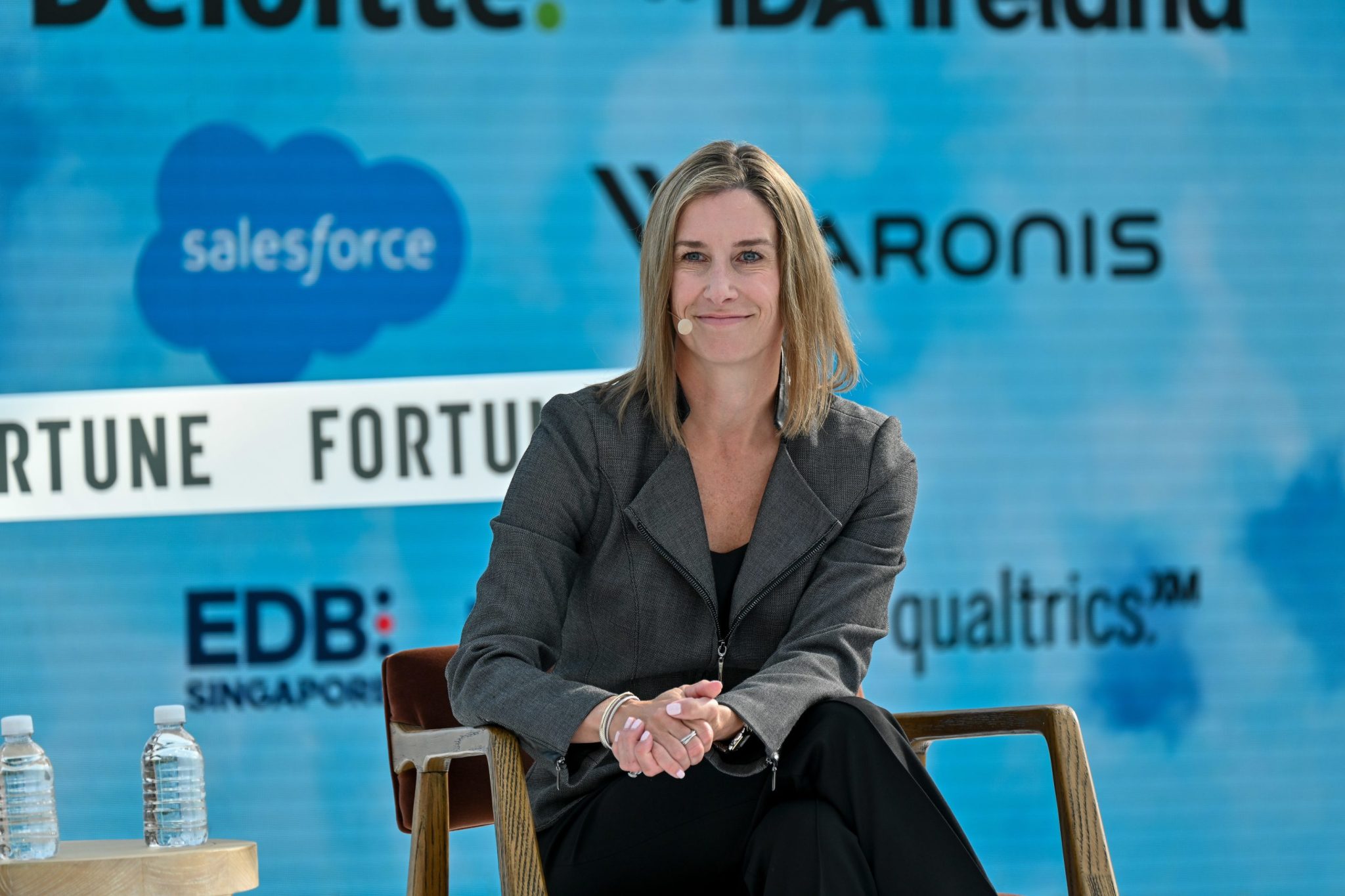
OpenAI may have started the generative AI boom in 2022, but with the world’s most powerful tech companies all turning up the competitive heat in AI, the maker of ChatGPT knows it needs to continually prove itself to customers.
For Ashley Kramer, OpenAI’s chief revenue officer, that means leaning on the company’s roots as a research lab and leveraging the experience it has gained over the years working with enterprise customers.
“You see a lot of different players in the space, doing things like popping different flavors of a chat up for free; you see ones doing big marketing efforts,” Kramer said Tuesday at the Fortune Brainstorm Tech conference in Park City, Utah. “For us, we want the value to be provided by what we’re actually driving, whether it’s for the customer, or the customer’s customer. For us, it’s all about the usage and the value.”
While Kramer did not name names, a number of companies, including Meta, Google, Anthropic, and Elon Musk’s x.AI, are investing heavily in developing ever more powerful LLMs and offering various AI-powered chatbots.
When working with customers in different industries, Kramer pointed out that certain elements can become repeatable in the enterprise space. “You understand how you can go from one bank to the other and help them, and then build on top of that,” she said. “We’re more focused on making sure we’re research-led first to build those products versus, in the enterprise, the big marketing buzz to try to capture a wider audience. We’re doing it very thoughtfully.”
To judge by OpenAI’s top line, the strategy is working. According to a recent report in The Information, OpenAI has nearly doubled revenue in just seven months—racing to a $12 billion annualized run rate. And the company has projected a 15% bump in 2030 revenue compared with its earlier forecasts.
But OpenAI also expects to burn through an eye-popping $115 billion between now and 2029—about $80 billion more than its previous estimate, according to the report. The ballooning spend is driven by the astronomical cost of computing power to train and run its AI models, along with a long-term plan to build its own chips and data centers to rein in costs.
Kramer, who has been with OpenAI since May, said the company has to strike a balance between making sure OpenAI has the capital it needs to build its frontier models and deliver its product capabilities, and driving customer adoption to earn revenue. “The balance is real, particularly from the finance level,” she said. “It’s all about measuring the usage of what we’re creating and making sure it’s driving value.”
At the same time, the Wall Street Journal reported Tuesday that OpenAI executives are growing uneasy about mounting political scrutiny in California that could derail its effort to convert into a for-profit company—a restructuring investors have demanded. Some of California’s most influential philanthropies, nonprofits, and labor groups are urging the state attorney general to ensure OpenAI’s proposed structure doesn’t violate charitable trust law. Attorneys general in California and Delaware are investigating, with the power to sue or force costly settlements if OpenAI is found to have overstepped.
More from Brainstorm Tech
Why Walmart’s U.S. CEO says staffing levels will remain steady even as AI becomes a bigger part of work
The CEO of U.S.-made electric truck company Slate says removal of EV tax credit is ‘opening up capacity’ from battery suppliers
DoorDash CEO Tony Xu says path to autonomous deliveries filled with ‘lots of pain and suffering’ but company is nearing first inning of commercial progress
#OpenAIs #chief #revenue #officer #research #chops #big #marketing #efforts #key #winning #customers